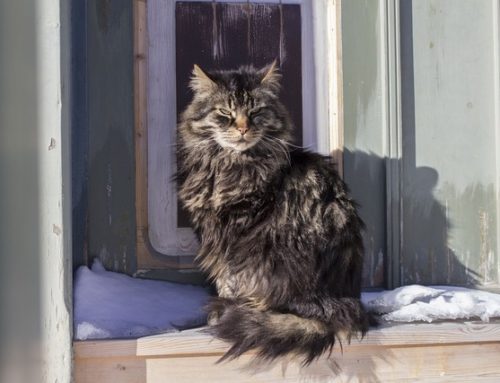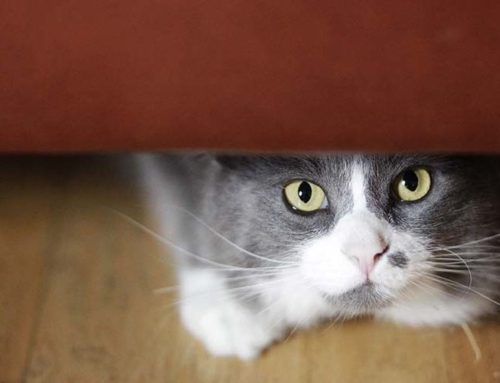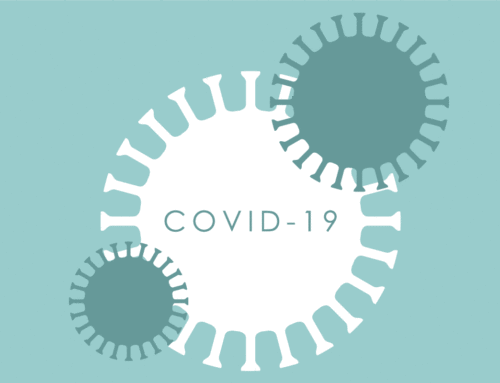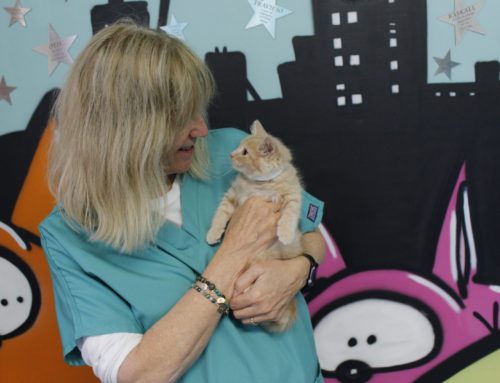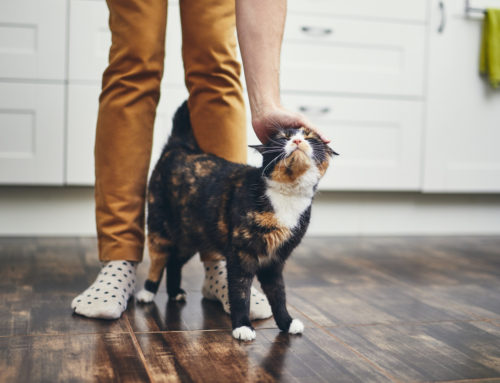 Are you feeding feral cats? Whether you are a rookie feeding a few cats in the backyard, or whether you are a “pro” who has been feeding large colonies of cats in back alleys for years, here are eight great ways to make sure your feral feeding stations are stellar set-ups.
Are you feeding feral cats? Whether you are a rookie feeding a few cats in the backyard, or whether you are a “pro” who has been feeding large colonies of cats in back alleys for years, here are eight great ways to make sure your feral feeding stations are stellar set-ups.
1. Proper Placement of Stations
Feeding stations should be discreet, low-profile and they should blend in with the immediate surroundings as much as possible. Try to keep them out of sight from the general public. Two reasons for this — first, cats won’t want to go to a high trafficked area to eat as they won’t feel safe, and secondly, this way it draws as little attention as possible to where the cats are getting fed, which affords them greater protection. If someone wants to harm the cats, it’s a lot harder for them to do that if they don’t know where you are feeding.
2. Constructing Your Feeding Station
There is nothing worse than having a big bowl of dry cat food that has been rained on – it turns to soggy mush and after about a day it can even get moldy. Cats won’t want to eat it and YOU will get stuck cleaning it! Feeding stations need to be waterproof.
Ideally, the feeding station you construct should be able to fit your bowls of food and at least one cat, so at a minimum one cat can eat at a time and that poor cat doesn’t have to eat out in the rain in inclement weather. Water bowls don’t necessarily have to be inside the feeding station, although it’s nice. If you can’t do a station that sizable because of the need for discretion, the bigger priority is to make sure the food stays dry and protected.
A slick and easy way to keep feeding stations dry is to take a large rectangular Rubbermaid storage bin, tip it on its side and put the food bowls in it. The bin serves double duty both as camouflage and it protects the food from the elements. If you get blustery rain where you live, you can take the lid to the storage bin and cut it length-wise and then put it back on the bin, so that the top half acts as an awning of sorts. Zip tie the lid in place. If you need to, you can even place the entire bin on a couple of wood boards or cement blocks so that it’s up off the ground and out of any puddles.
Depending on how many cats you’re feeding, an empty cat carrier with the door taken off can also be a waterproof feeding station. Your average medium size cat carrier can fit at least one if not two big bowls for food. Similarly, any sort of large plastic bin or wooden box with one side cut open will do. The most important factor is that it’s waterproof.
Dog houses may work, depending on your colony situation, but they aren’t always that great. If there is only one small entrance/exit – one cat might come in and startle another cat eating, which can be a recipe for a cat fight that will literally blow the roof off the house. Dog houses can make great feral cat shelters, but shelters are a little different from feeding stations. With feeding stations, you want to keep the station so that it’s relatively open and easily approachable by cats.
If you’re feeding by a fence or a wall, try propping up a piece of plywood against the fence in a “lean-to” sort of way, so that it offers shelter for the food bowls, plus it acts as camouflage. This works especially well if the lean-to is between bushes and a fence or wall, as the bushes help keep the lean-to in place.
Or you could rock it really cheap and easy: Use two cement blocks and plop a piece of plywood right on top in between, exactly the same way you built bookshelves back in college. Put the food bowls underneath the board in between the cement blocks and voilà, a cheap but effective feeding station.
3. Choosing the Right Feeding Dishes
You’ll want to choose an overall bowl style that will work best for your own situation. As a general rule, though, it’s important to select bowl colors that will blend in with the area where you’re feeding. If you’re feeding in an open, natural setting, choose earthy colors such as tans, greens, browns and blacks. A bright red bowl in a park or nature setting will stick out like a sore thumb and draw unnecessary attention. Go with muted and dark colors.
Plastics, metals and glassware are the most widely used materials. Heavy plastic bowls are versatile and easy to clean. Metal can retain heat or cold more than plastic, staying cool or staying hot longer. Use caution with glassware, since glass dishes can break and you don’t want broken glass around ferals. If you go with glassware, try Pyrex since it doesn’t break so easily.
Paper plates and paper bowls can be a cheap and easy option, but they aren’t water resistant like plastic and they tend to blow around as soon as they’re empty. If they are not picked up diligently, they can make an area look trashy. Use paper plates appropriately and sparingly.
Some people love using the plastic trays that you get frozen food in. These trays can be saved from your frozen dinners and reused for feeding cats, or you can buy them in bulk at places like Costco. These are better than paper plates in that they are waterproof, plus you don’t have to wash them, you just throw them away after one or two uses. However, because they are really lightweight, just like paper plates, these plastic trays can blow around and make an area look littered. Be diligent about picking them up. And better yet, recycle them.
Gravity dry-food dispensers are another feeding option. These can either work really well or not at all. Oftentimes, the food doesn’t always fall down on its own as it’s supposed to and it takes some jiggling to get it to fall. If these tip over or get water in their base, they can make a bit of a mess, too. These type of feeders seem to work best over shorter periods of time (i.e., weekends) or in parking lot feeding situations.
Brown paper bag trick — One great trick, especially in areas that you can’t get to daily, heavy urban areas or areas that may be slightly hostile to feeding cats — is the brown paper bag trick. Take a double bagged brown grocery bag and cut the bottom 4″ off, so you have a sort of “trough”. You can use that to hold your dry food. This is a lot less obvious than paper plates or bowls scattered around because at first glance, it looks innocuous, like trash. People don’t see it and immediately think that someone is feeding, like they do with a plate. Plus, it can hold a lot of food until you can get back to that feeding area again. One drawback is it can get wet. But for the dry spells here in SoCal, and especially in back alleys or urban settings, it works great.
4. Avoiding Ants
Ants can plague feral feeding stations. Most people find that “moat” bowls work well. This is where you have a large outer bowl filled with an inch or two of water and you put a smaller bowl inside it holding the food. A 9×13″ baking pan can work well as an outer bowl; fill it with an inch of water and then place in it almost any size inner bowl. Moat bowls can be easily homemade and are very inexpensive.
Ant-Free Feeders with Fitted Tents – Then there is our personal fave, the ant-free feeders with tents. These are the Cadillac of bowls! The colors are muted and natural, it’s a “moat” bowl system where the inner bowl clips in place (guaranteeing the bowls will stay put), they are made of hard plastic that is easy to clean, and they really hold a lot of food. What’s more, they have a custom vinyl tent that does an excellent job protecting the food from getting wet from any direction, while allowing cats to easily stick their heads in to feed. These bowls are a little pricier than the homemade options, but they are well worth it for any longer-term colony feeding stations.
5. The Art of Feeding
Make sure there is fresh water daily and that water bowls aren’t full of algae scum. In cold weather areas, you’ll need to keep the water from freezing solid. We don’t really have that problem so much in SoCal, so we defer to our NY friends to show us how it’s done (See Neighborhood Cats article “How to Prevent Water From Freezing“).
Dry food bowls should be free from debris like leaves and dirt. Every couple of days either swap out the bowls for fresh ones or thoroughly clean those bowls with soap and water before refilling them.
Keep the overall feeding station clean! This is often where people go wrong and why neighbors complain about people feeding cats. If there is food scattered everywhere, empty paper plates blowing around, empty Friskies cans scattered and dirty water bowls, this is not only going to be unhealthy for the cats, it will attract unnecessary attention to them as well. Trashy feeding stations are also more likely to attract various kinds of wildlife, like opossums, skunks and raccoons, which again are major causes for neighbors to complain. Keep a “clean-up” kit in your car that includes: Paper towels, disposable gloves, an extra jug of fresh water, wet wipes, doggie pick-up bags (you can use to clean up cat feces), an empty trash bag, dish soap, a flashlight and a small broom and dust pan.
Your best bet is to get into a cycle of feeding at the same time every day. Feed once a day, be it in the morning or evening. Ideally, it’s best to leave the food down for about 30 minutes or an hour, let the cats eat each in their own turn, and then to pick the food bowls up for the night so the remaining food doesn’t attract wildlife. We know that’s not always possible; sometimes you can’t get to a feeding station daily. Do your best to keep it clean, contained and discreet. Daybreak and dusk are the two best times to feed, as cats are up and active then.
6. Close Monitoring of Your Colony
After you feed, don’t race off! Plan to spend about 15 minutes observing what happens. Either sit in your car or watch from a short distance away. See who shows up, whether they are eartipped and what kind of shape they are in. If you are not already keeping a log of all of the cats in your colony, you should try to — jot down names, breeds, colors and descriptions, who you get fixed and when, etc.
Monitor how much food the cats are eating on a daily basis. That alone will give you an initial indication of how many cats you may be feeding, and you’ll know what is “normal” for that colony. If they are going through their food faster than normal, you may have a pregnant mom or some newcomers who have showed up. If they are eating less, you should try to do a headcount on the cats to see if they are all okay.
With the cats who do show up to eat, watch for health issues that could need medical attention. Watch for signs of mange. Look for URI signs like runny eyes or snotty noses and listen for sneezes. If a cat seems to be losing weight or if their coat seems matted or unkempt, like they aren’t grooming themselves well, it is likely an indication of illness and you should trap that cat and take him/her to a vet immediately.
7. Safety Always
Be safe. We can’t stress this enough. If you’re feeding in a sketch area, go at a time when there is the least amount of foot traffic and try to go during daylight — either at the crack of dawn or just before dusk. Keep a flashlight on you and always have a cell phone with you. If you go feeding alone, use a check in system with a buddy, particularly if it’s a dodgy area. Try to avoid feeding while strangers are milling about. If your regular feeding area seems to be getting compromised for any reason, try to gradually move the feeding station 10 feet at a time down to somewhere a bit safer – either away from traffic or from harmful people. Don’t ever put yourself in an unsafe situation just to feed.
A couple other thoughts on privacy — make sure you don’t show or discuss your feeding station with just anyone at random. You never know who might do what to the cats, and your ability to keep their space private and confidential means safety for the cats. That said, you should show at least one or two trusted friends the feeding station(s) so that you always have a backup. Due to health issues, vacations or simply life circumstances, you never know when you’ll need a backup who can cover the feeding for you for a while. This is all the more reason to have a log of who you’re feeding and where, in case someone needs to cover the feeding for you.
8. And the Most Important of All…Feeding AND Fixing!
Providing food, water and shelter for outdoor cats is important, but it’s also equally important to make sure all of the cats in the colony are spayed and neutered as quickly as possible, once you start feeding a colony. If not, your small colony will quickly quadruple in size in a short period of time. Spaying and neutering the cats will not only stop the cycles of kittens, it will eliminate the problematic behaviors such as howling, fighting and spraying. If you’re feeding, you’ve got to be fixing.
Bon appetit!
FeralVilla – Maker of wooden platform feral feeding stations
The Outdoor Pet Feeder – Moat system ant-free feeding bowls and tented bowls
“The Mote” – Waterless moat-style ant-proof bowls
Raccoon-Free Feeding Stations – How to construct a feral feeding station that raccoons can’t reach
Feral’s Place – Insulated Outdoor Cat Shelters and Feeding Stations
Photo examples of feeding stations and feeding platforms







